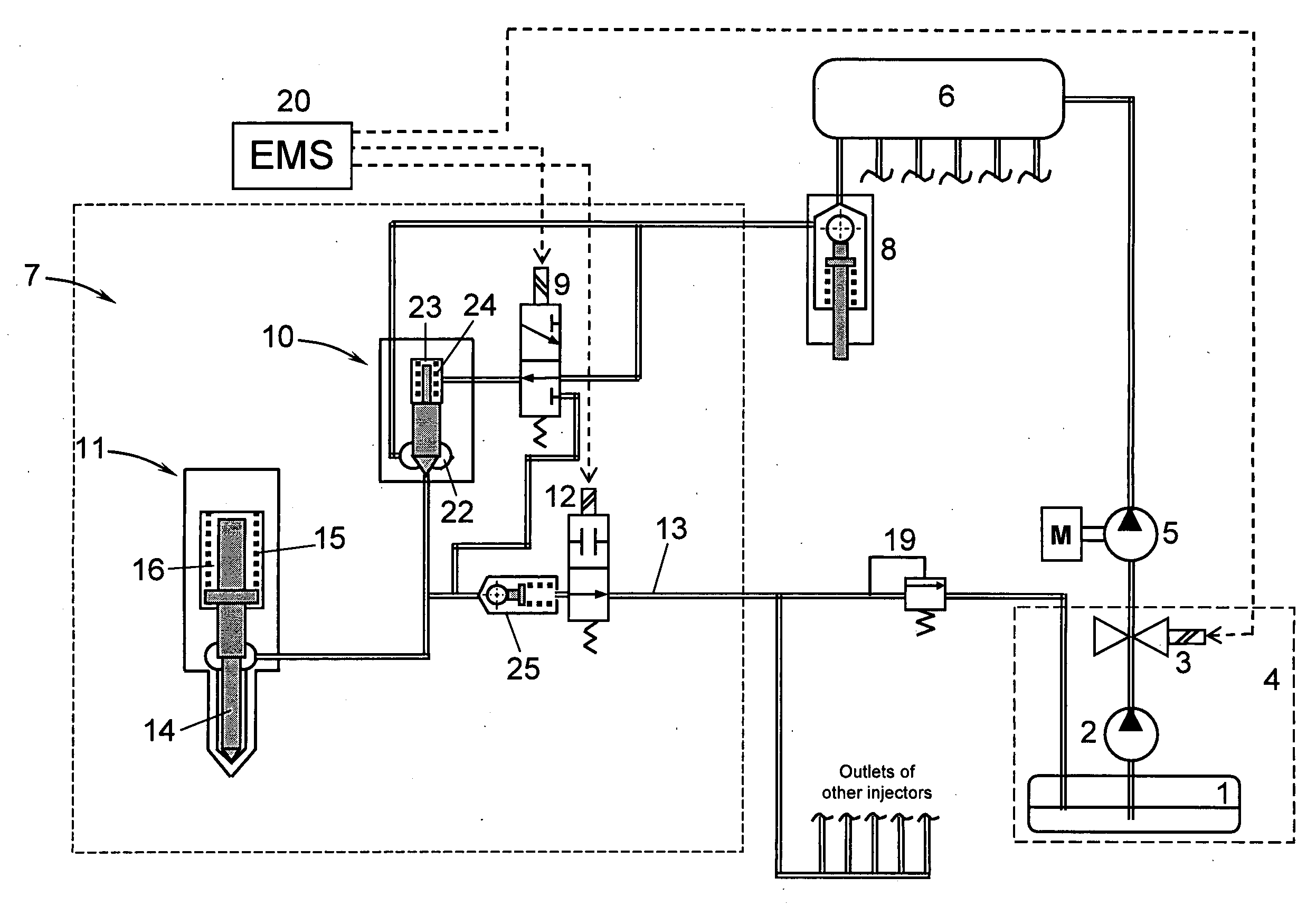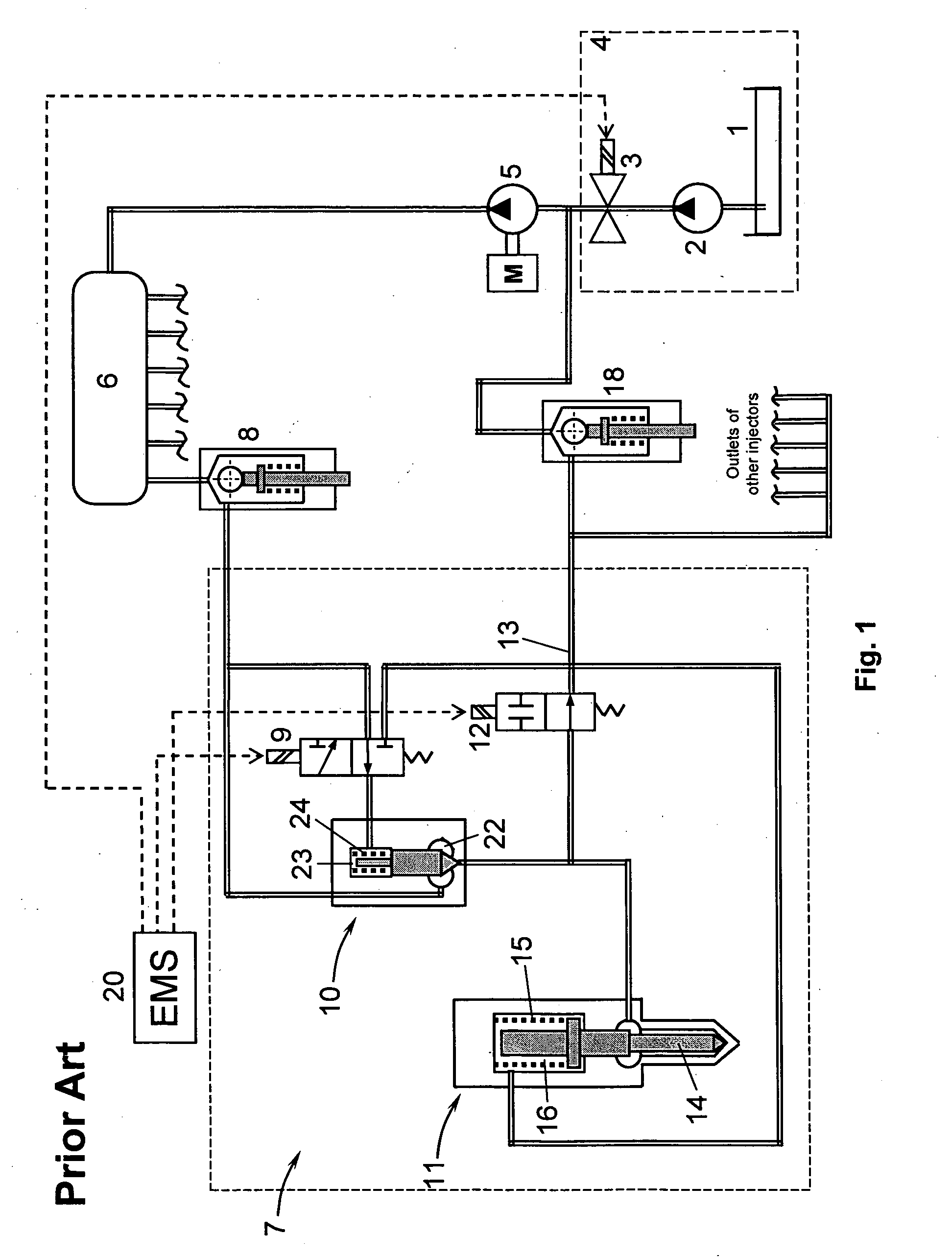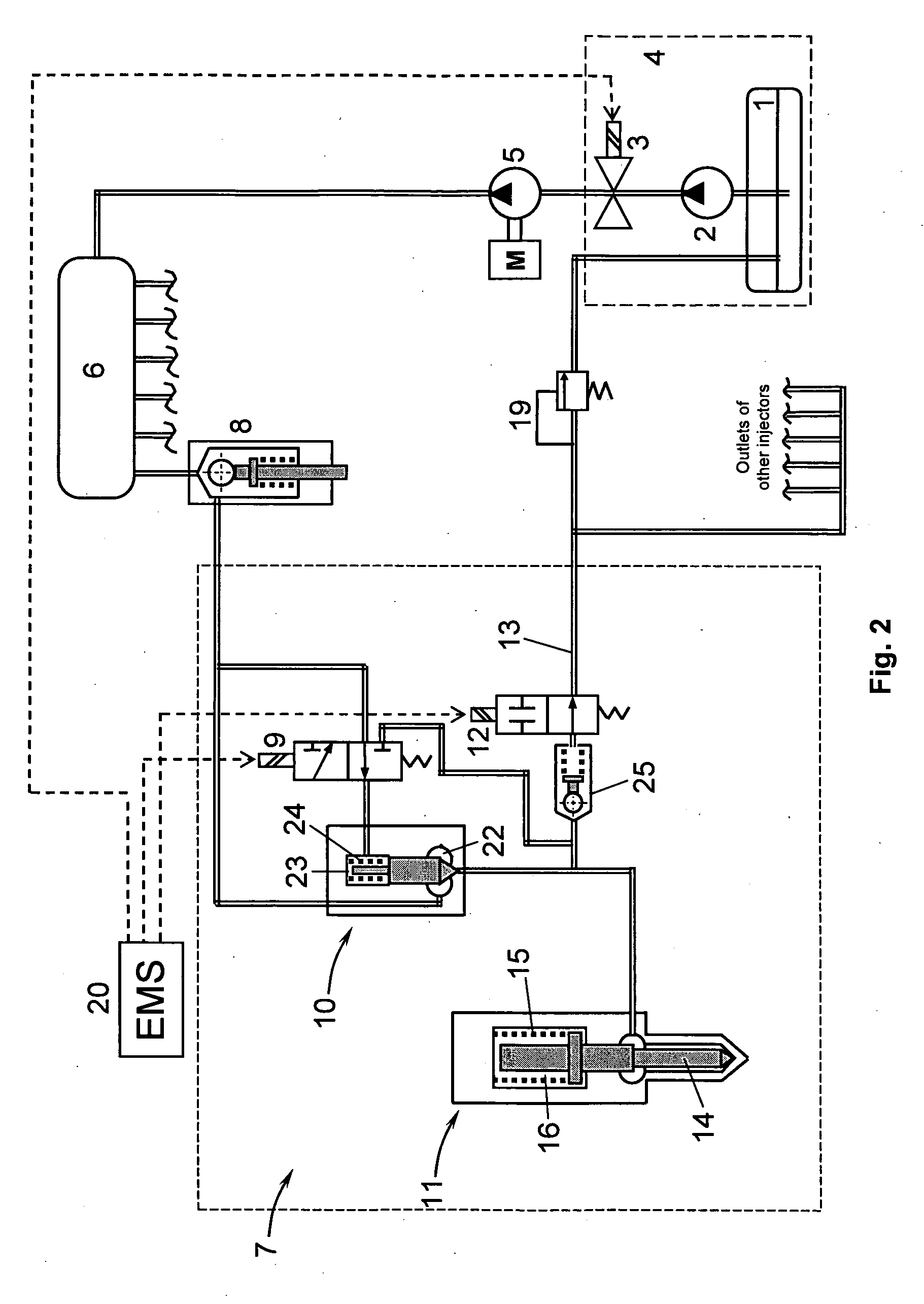Fuel injection system
- Summary
- Abstract
- Description
- Claims
- Application Information
AI Technical Summary
Benefits of technology
Problems solved by technology
Method used
Image
Examples
Embodiment Construction
[0022]In an example embodiment shown in FIG. 2, a fuel injection system according to present invention incorporates a fuel tank 1, a feed pump 2, an isolating valve 3 and other associated components (not shown) forming a low-pressure system 4, and a high-pressure pump 5 delivering fuel under pressure into a common rail 6, which supplies pressurised fuel to all injectors 7 of a multi-cylinder engine (not shown). An automatic isolating valve 8 is installed between the common rail 6 and the injector 7, which latter one incorporates a three-way electrically operated pilot valve 9 that controls a hydraulically operated valve 10 positioned between the common rail and a nozzle 11, and an electrically operated, two-way, normally open spill valve 12 positioned between the outlet of the hydraulically operated valve 10 and a return line 13. The nozzle 11 has a needle 14 that is biased by a return spring 15 towards closing the nozzle. The return spring is installed in a spring chamber 16 which,...
PUM
 Login to View More
Login to View More Abstract
Description
Claims
Application Information
 Login to View More
Login to View More - R&D
- Intellectual Property
- Life Sciences
- Materials
- Tech Scout
- Unparalleled Data Quality
- Higher Quality Content
- 60% Fewer Hallucinations
Browse by: Latest US Patents, China's latest patents, Technical Efficacy Thesaurus, Application Domain, Technology Topic, Popular Technical Reports.
© 2025 PatSnap. All rights reserved.Legal|Privacy policy|Modern Slavery Act Transparency Statement|Sitemap|About US| Contact US: help@patsnap.com



